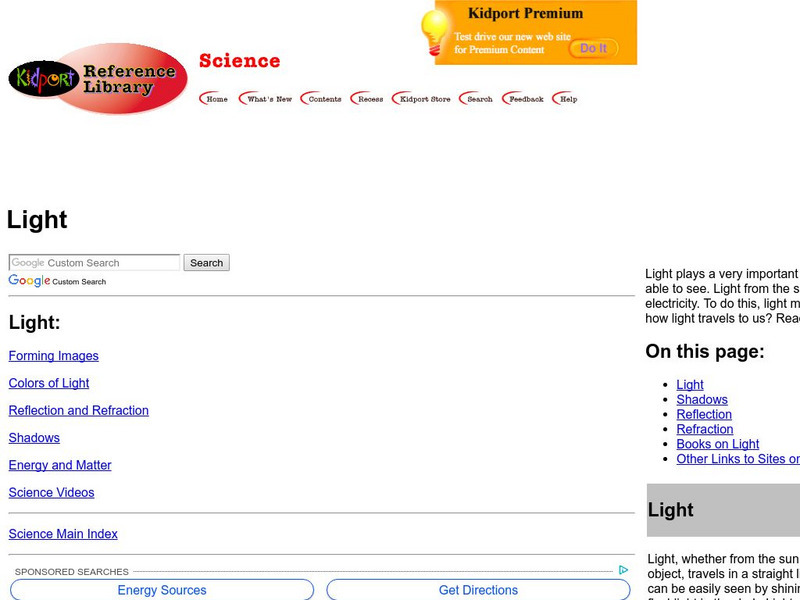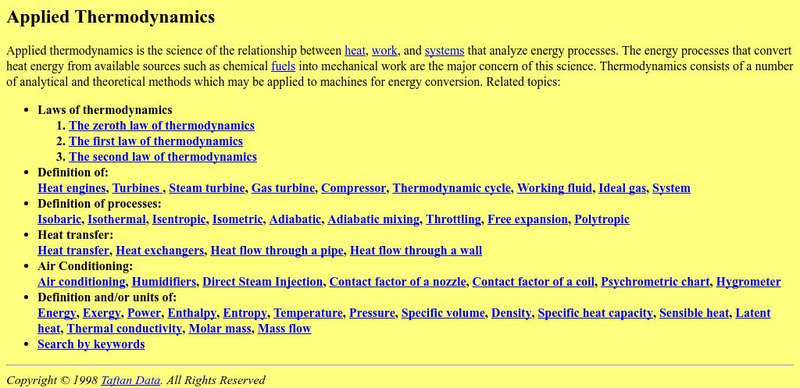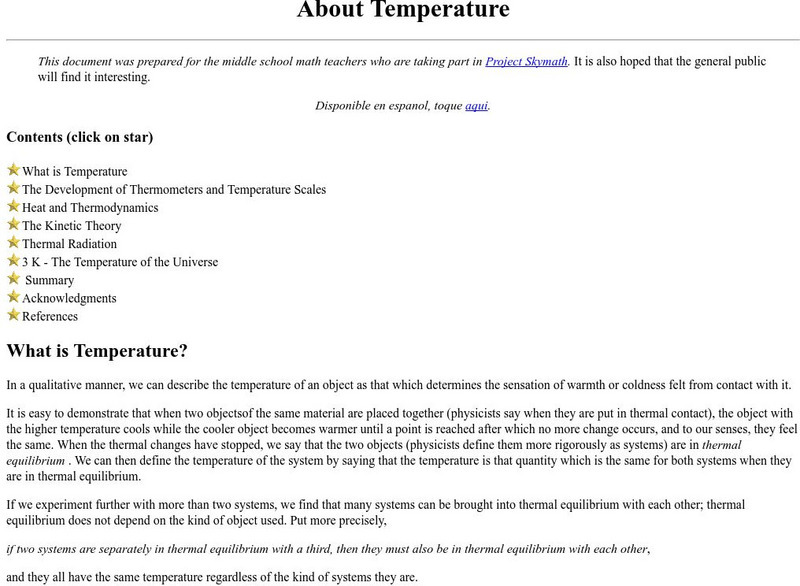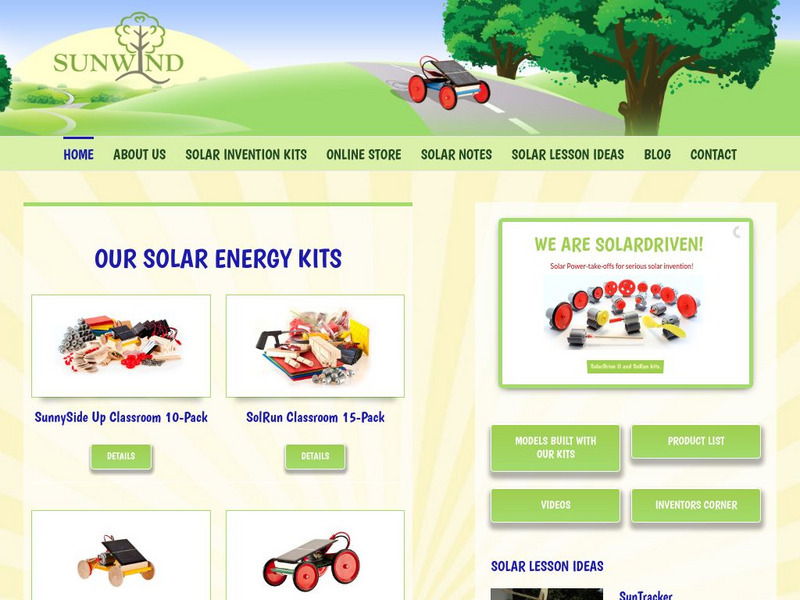American Museum of Natural History
What is the Greenhouse Effect?
Without the greenhouse effect, Earth would not be inhabitable. A thorough online resource describes the greenhouse effect and how it occurs. The source highlights the different types of gases that work together to absorb the sun's...
American Museum of Natural History
Climate Change
It actually is possible to have too much of a good thing when it comes to climate change. A slide show lesson describes how burning fossil fuels contributes to climate change. Individuals read about the scientific process and the...
American Museum of Natural History
Journey to the Stars
Fifteen detailed pictures and informative captions delve deep into the exploration of stars—their life cycle and importance in the universe.
American Museum of Natural History
They Glow!
Would you believe marine animals can make their own light? An online resource describes the process of bioluminescence and how animals in the ocean use it to survive. The lesson features a catchy tune that describes the behavior of ocean...
Khan Academy
Khan Academy: Heat and Temperature
An explanation of using heat capacity to calculate heat.
FT Exploring
Ft Exploring: What Type of Energy Is It?
How many types of energy are there? Are there many forms of energy, such as electrical, mechanical, and chemical? Or are there really just two types of energy - kinetic energy and potential energy? Here you can learn about these...
Ducksters
Ducksters: Physics for Kids: Energy
Kids learn about the science behind Energy including its different forms such as chemical, electrical, heat, and gravitational. When is energy considered renewable or nonrenewable?
Science Buddies
Science Buddies: Burning Biofuels: Comparing Nonrenewable and Renewable Fuels
Will using agrofuel offer a substantial alternative to using fossil fuel? With this experiment you can compare the amount of heat energy released by agrofuel and fossil fuel. The Science Buddies project ideas are set up consistently...
Idaho State University
Global Wind Systems [Pdf]
A great description of the global scale circulation and heat energy. Discusses a single-cell model, a three-cell model, jet streams and more.
PBS
Pbs Learning Media: The Electromagnetic Spectrum: Frontline
This video segment adapted from FRONTLINE introduces the electromagnetic spectrum and explains how the various types of electromagnetic waves are distinguished by the amount of energy each wave carries.
Purdue University
General Chemistry Topic Review/heat
Heat is defined and explained; the concept of heat is related to the kinetic motion of particles and to temperature. Heat capacity and specific heat are explained. Sensible heat is compared to latent heat; reference is made to the heat...
University of Sydney (Australia)
Thermal Physics Module: Refrigerators and Heat Pumps [Pdf]
Refrigerators and heat pumps are described. Their operation is explained and the variables which improve their efficiency is discussed.
Other
Applied Thermodynamics: Heat Engines
Forward and reverse heat engines are discussed and explained at this site from Applied Thermodynamics. Diagrams are provided. Efficiency equations are given and discussed.
Ducksters
Ducksters: Environment for Kids: Geothermal Energy
Kids learn about geothermal energy and how this renewable power can help the environment. Teach students about heat pumps and electric plants.
Environduck
Enviroduck: Greener Home Saving Energy With Hvac and Hot Water
Conserve energy at home with these hvac, heating and air conditioning, and hot water tips.
University of Sydney (Australia)
Thermal Physics Module: Heat Engines [Pdf]
The second law of thermodynamics and the concept of entropy is applied to the topic of heat engines. The Carnot and Stirling engine are discussed. Efficiency is explained and an equation is derived.
Other
Energy Resources: Geothermal Power
This site was put together by a science teacher and provides a very nice introduction to how geothermal powered energy resources may be used. Discusses advantages and disadvantages.
Ducksters
Ducksters: Environment for Kids: Solar Energy
Kids learn about solar energy and how this renewable power can help the environment. Teach students about solar cells and using the sun for heat.
Kidport
Kidport: Light
Did you know that light is a form of energy and always travels in a straight line? Discover some more interesting facts about light.
Other
Taftan: Applied Thermodynamics
A definition of applied thermodynamics, the science of the relationship between heat, work, and systems that analyze energy processes. Related links.
University Corporation for Atmospheric Research
Ucar: About Temperature
This site from the University Corporation of Atmospheric Research provides a lengthy page covering numerous topics including the difference between heat and temperature, the use of different temperature scales, thermal expansion, how a...
Other
Princeton Plasma Physics Laboratory: Fusion Basics
A wealth of background information on nuclear fusion and its potential use as a commercial energy resource. The advantages of nuclear fusion over other resources, the conditions required for its successful implementation and the future...
Other
Sun Wind Solar Industries, Inc.
Solar energy facts and information. Instructions on how to build solar devices.
PBS
Pbs Learning Media: Solar House
In this What's Up in the Environment? video segment, an electrical engineer in Virginia and his 13-year-old son explain how they produce electricity in their home. [3:58]
Other popular searches
- Heat Energy Transfer
- Transfer of Heat Energy
- Science Heat Energy
- Thermal Energy and Heat
- Measuring Heat Energy
- What Is Heat Energy
- Forms of Heat Energy
- Heat Energy and Conduction
- Heat Energy Experiments
- Science, Heat Energy
- Heat Energy and Insulation
- Heat Energy Temperature








![Global Wind Systems [Pdf] Website Global Wind Systems [Pdf] Website](https://static.lp.lexp.cloud/images/attachment_defaults/resource/large/FPO-knovation.png)









